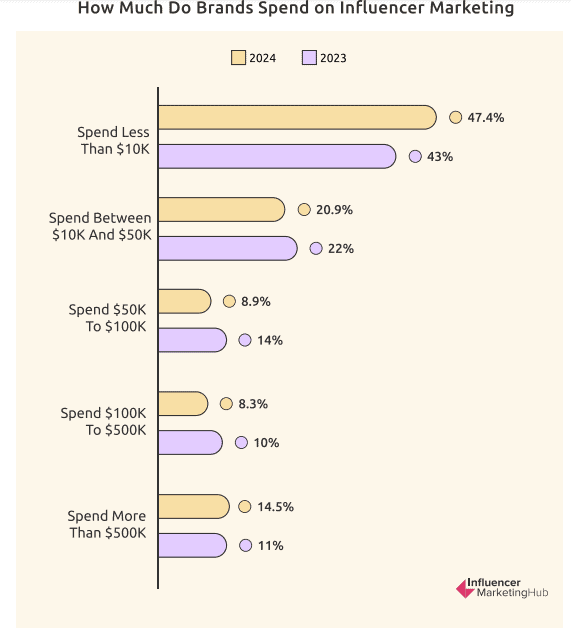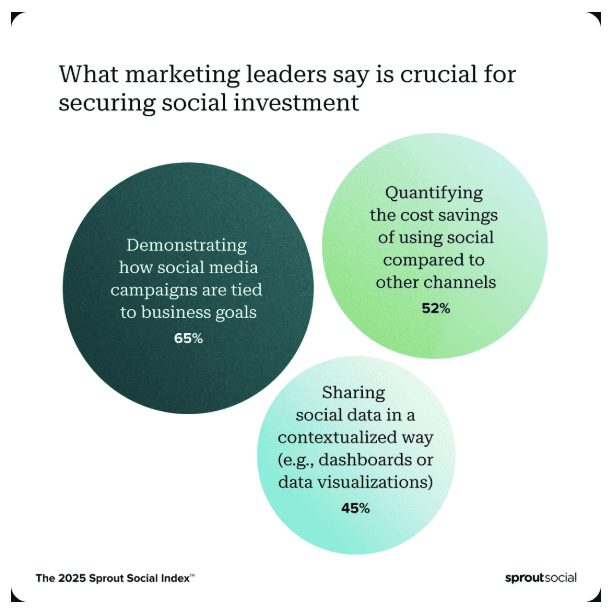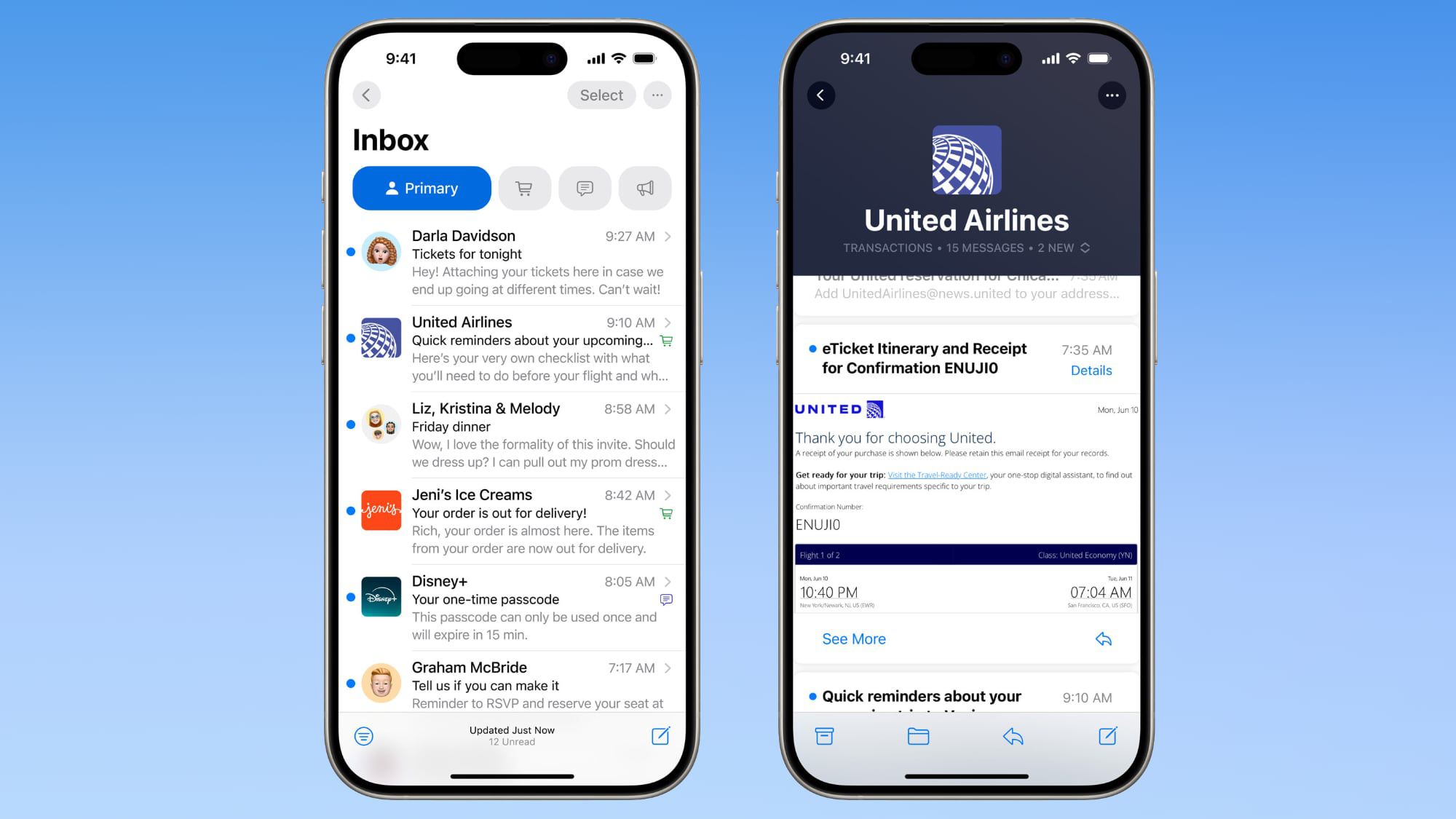Without metrics, it’s hard to know what works on social media and the best type of content to post and drive engagement that will convert leads into customers. The right social media metrics help know what resonates with your target audience so you can create more of it, engage them with your brand, build trust, and nurture them to be customers.
Tracking how they engage with your brand makes understanding them easier and provides a great experience and content.
You easily build trust, get them to engage more with your brand, and know how you can solve their pains.
In this article, you will learn 8 essential social listening metrics to track and drive better engagement on the content you post on social media.
Why tracking social media listening metrics is essential
- Know content types that work best. The metrics show the content the target audience loves and engages more with on social sites. You know what content you will create to capture the audience’s attention and engage them with your brand to show the value you offer to solve their challenges. Through the metrics, you will be able to create and publish content that prospects love, engage, and share on their social channels to increase brand awareness. Research by Sprout Social Index shows that 65% of marketing leaders say it’s essential to show how social media campaigns are tied to business goals.
Source: Sprout Social
- Understand your customers better. With the tracking, you know the types of content your audience loves and engage more on social media. It gives you an edge on the content you create to drive more engagement and build trust with the target audience. Through the feedback your customers leave, you identify customer pains better and know the best way your brand can help solve those pains and build a lasting relationship with customers.
- Get to know the social sites that work best for you. User preferences for social media channels differ from one user to another. With social media listening tracking, you can easily know social sites where most of your target customers love and hang out. It will be easy to post great content on your most preferred channel by leads and engage them with your brand.
- Know the strengths and weaknesses of your competitors. Tracking social media listening metrics gives you ideas on what works and doesn’t work for your competitors. You know the types of content that engage their audience better and create more of that content on social platforms. The insights help you know how to build great relationships with your customers and prospects and keep generating leads for your business.
Metrics to track
- Engagement metrics. Likes, comments, and shares help brands gauge how well content resonates with the target audience. A high number of shares and comments indicate the audience sees value in the content. You also track the type of content that drives more engagement so you can create more of it for your target audience. Reading the comments on your posts from your target audience gives more ideas you can use to create other content types and keep engaging the reader. As Mocca, Digital PR Strategist at Thrive Digital Marketing Agency notes For instance, a behind-the-scenes Instagram Reel drove a 25% increase in shares compared to standard posts, signaling an opportunity to double down on dynamic, insider content. Without this level of data analysis, we’d have missed an opportunity to deepen engagement with their audience.
Sharing my experience with a beauty brand client. We uncovered that customers frequently shared positive feedback about their packaging but expressed frustration with slower-than-expected responses to direct messages. This insight prompted immediate action to improve response times, leading to an 18% increase in positive sentiment over three months.
Run an analysis of your social content engagement, and the likes and shares your content gets once you post it on social media. The higher the engagement, the higher the indicator that the content resonates with your target audience and they love engaging with it on social media.
- Share of voice. Tracks how your brand is visible on social sites compared to your competitors. With this metric, you see how your brand performs compared to its competitors regarding online conversations and how they engage with the target audience to increase brand awareness. You gauge how much of your social conversation is about your brand and what it offers compared to competitors in the market. Janelle Warner, Co-director at Born Social shares
One client, I worked with was a small startup trying to disrupt a market with entrenched leaders. When we started tracking share of voice, they had less than 1% of overall conversations – most people were still just talking about the big brands. But as the startup executed smart social campaigns and gained traction, we saw their share of voice steadily climb. Within a year they had a 5% share of voice, punching far above their weight. This showed their messaging was cutting through and they were gaining mindshare. Share of voice was a leading indicator of their future success.
A higher share of voice indicates your brand is more popular and many people love and engage with it on social media as they find content and solutions to their pains.
- Influencer engagement. Knowing how influencer campaigns impact your target customers on social media is good. Track niche influencers who mention your brand or create user-generated content to tell target customers about your business. You can track the impact they have as they drive more audience to your brand. Know and analyze the engagement rate per each influencer post and how your target audience. engages with it. It will help you gauge the conversion rate of your influencer campaigns. Partner with influencers in your industry and get them to create content that the target audience loves and engages with. Track your influencer campaign performance to evaluate the level of engagement and know how you will improve your efforts to drive more content engagement. For example, research by influencer marketing hub shows that 20.9% of brands spend between $10K AND 50K on influencer campaigns.

- Source: Influencer Marketing Hub
With the information on how influencers affect target customers on social media, you can know whom to partner with to help increase brand awareness and build trust with target customers as they get to know more about your business and how it solves their challenges.
- Track competitors. Know what’s working for your competitors and how they engage the target audience. Monitor their engagement, know how they handle customer needs, and provide actionable help to their challenges. By tracking your competitors, you can identify new opportunities and trends they use to capture and engage target audiences which you can use to drive more engagement for your business. What content are your competitors creating? How are they engaging with it and what do they say about the competitor’s content and brand? All these insights will help you get better at your content and engage leads through the nurturing process.
- Demographic data. That’s data based on user profiles like age, location, social media channels they use, their preferences, etc You can know how customers in different groups and preferences engage with your content so you can know how to engage them and build trust. Tracking this metric helps understand how different groups of target customers engage your brand and how you can design and create better content that aligns with the user’s needs. It will be easy to segment your audience and create and share different content that resonates with them in their different demographics and drive better engagement to your brand.
- Sentiment score metrics. Tracking this metric helps brands respond to issues target customers express and handle any negative sentiments that can affect your brand image and reputation. If customers express negative sentiments, handle them immediately to avoid negative branding that can affect how target customers perceive your brand. Here is what Iva of MadeOnline says
It helps us gauge people’s feelings about the brand—whether conversations are positive, negative, or neutral. Tracking sentiment around product launches or campaigns has allowed us to change our strategy in real time. In one case, a SaaS client’s negative sentiment spiked after a feature release. By responding quickly to concerns with personalized responses and follow-up content, we not only increased customer satisfaction but also user retention.
Hear what Balázs Keszthelyi, Founder of https://www.technolynx.com/ says,
Tracking these metrics has yielded significant insights. For instance, by analyzing sentiment, we identified a shift in public perception during a product launch, which allowed us to adjust our messaging in real-time. This proactive approach led to a 30% increase in positive engagement within the first week. Moreover, monitoring engagement rates has helped us refine our content strategy, resulting in a 25% increase in user interaction over the past quarter.
You can also monitor sentiment changes over time as the customer sentiments can change from time to time. A positive sentiment score helps build customer trust and loyalty with customers. It indicates your customers love and want to engage more with your brand.
- Brand Mentions. How are customers and target audiences mentioning your brand or products and services you offer on social media? The post volume also matters. How are they mentioning your brand? Are they giving positive, negative, or neutral mentions? All these actions strongly indicate how customers perceive your products or services. Satisfied customers can go to the length of creating user-generated content which can drive more engagement, build trust with other potential customers, and drive conversions and sales. If your customers are creating user-generated content to show more value to your business and advocate your brand, that’s great traction for you. You know prospective customers will trust a brand more if they get positive feedback from past customers sharing the value they got from the business.
In wrapping up
Social media listening metrics give brands information they need to know more about how their customers engage and view their brand.
Tracking listening metrics opens deeper insights for brands to engage and nurture leads and customers through social media. They get to know their target customers better, and what they want from their business to make it easier for brands to solve their challenges.
Take advantage of these metrics, track them, learn how your customers engage with your content, and create more engaging content that resonates with the audience.
Author Bio

James Nguma is a B2B SaaS and eCommerce content marketer and blogger. He helps SaaS and eCommerce businesses create marketing content to drive traffic, educate them about their businesses, build trust, and convert leads into customers. Connect with him on LinkedIn or his website











